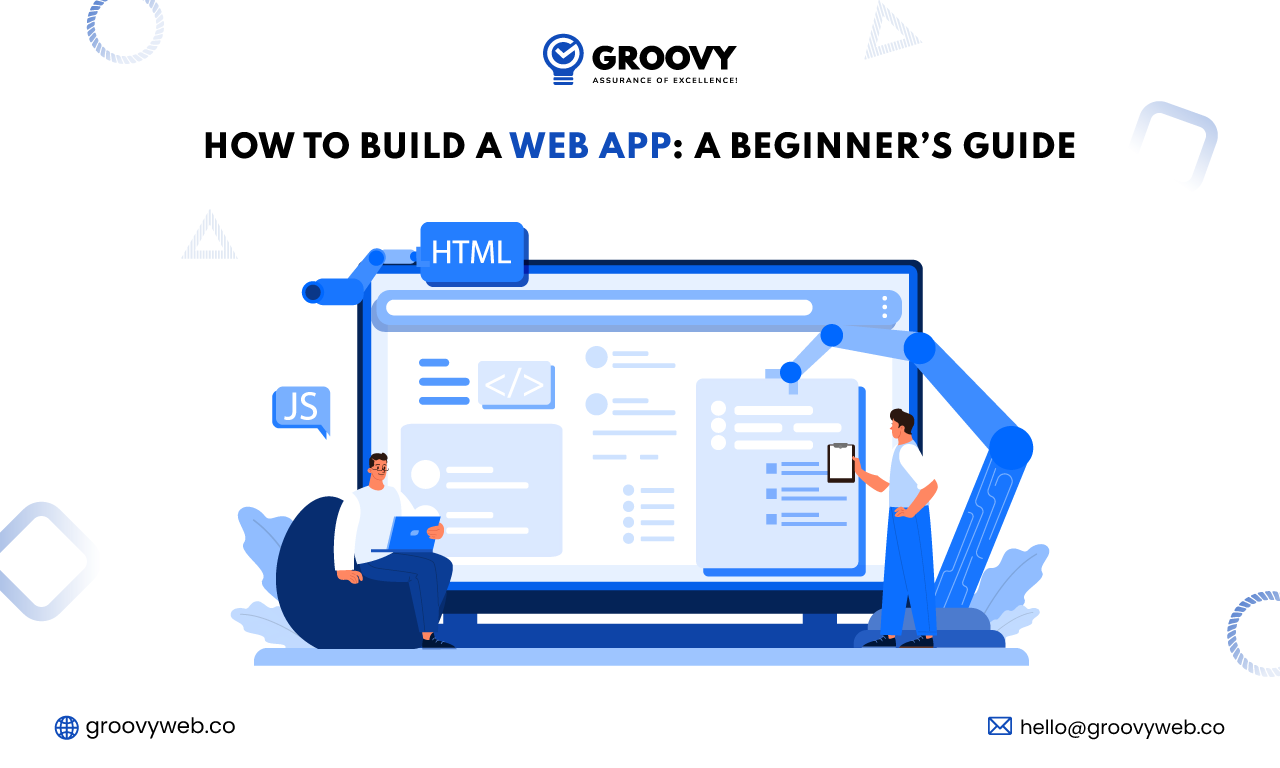How Much Does It Cost of a Telemedicine App?
Rahul Motwani
January 28, 2025 115 Views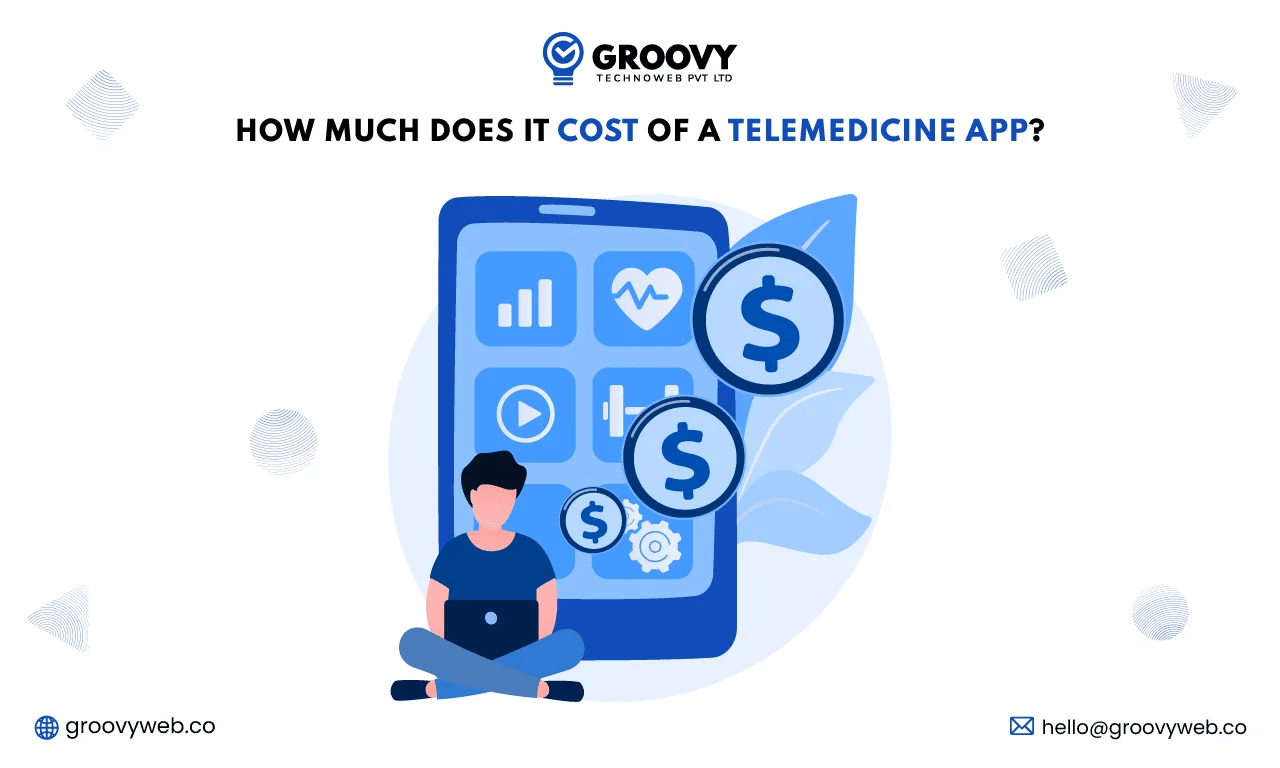
Quick Summary : Telemedicine app development costs vary significantly depending on features, design, and integration. A basic app may cost $30,000 to $50,000, while complex solutions with added features and high security can reach upwards of $100,000. Other factors, including platform choice (iOS/Android), maintenance, and compliance with healthcare standards, influence the total cost. It's essential to plan for scalability and ongoing updates. Understanding your specific requirements and selecting the right development team ensures the best value for your investment in telemedicine technology.
Telemedicine apps have converted healthcare by providing patients access to scientific professionals anytime and from any place. With the surge in digital healthcare, groups are keen to discover improvements in telemedicine application. However, facts at the rate of telemedicine app creation are crucial for green planning and execution. In this weblog, we delve into the factors influencing the cost of telemedicine app development, offer statistical insights, and direct you through estimating costs.
What Is a Telemedicine App?
Telemedicine apps provide remote consultation services among patients and healthcare companies. These apps offer functions like video calls, appointment scheduling, virtual fitness information (EHR), or even online prescription control. With an annual increase in the price of 25.8%, the telemedicine marketplace is projected to attain $396.76 billion via using 2027, making now the high-quality time to develop a telemedicine application answers.
Factors Affecting the Cost of Telemedicine App Development
When estimating the cost of a telemedicine app, several elements come into play:
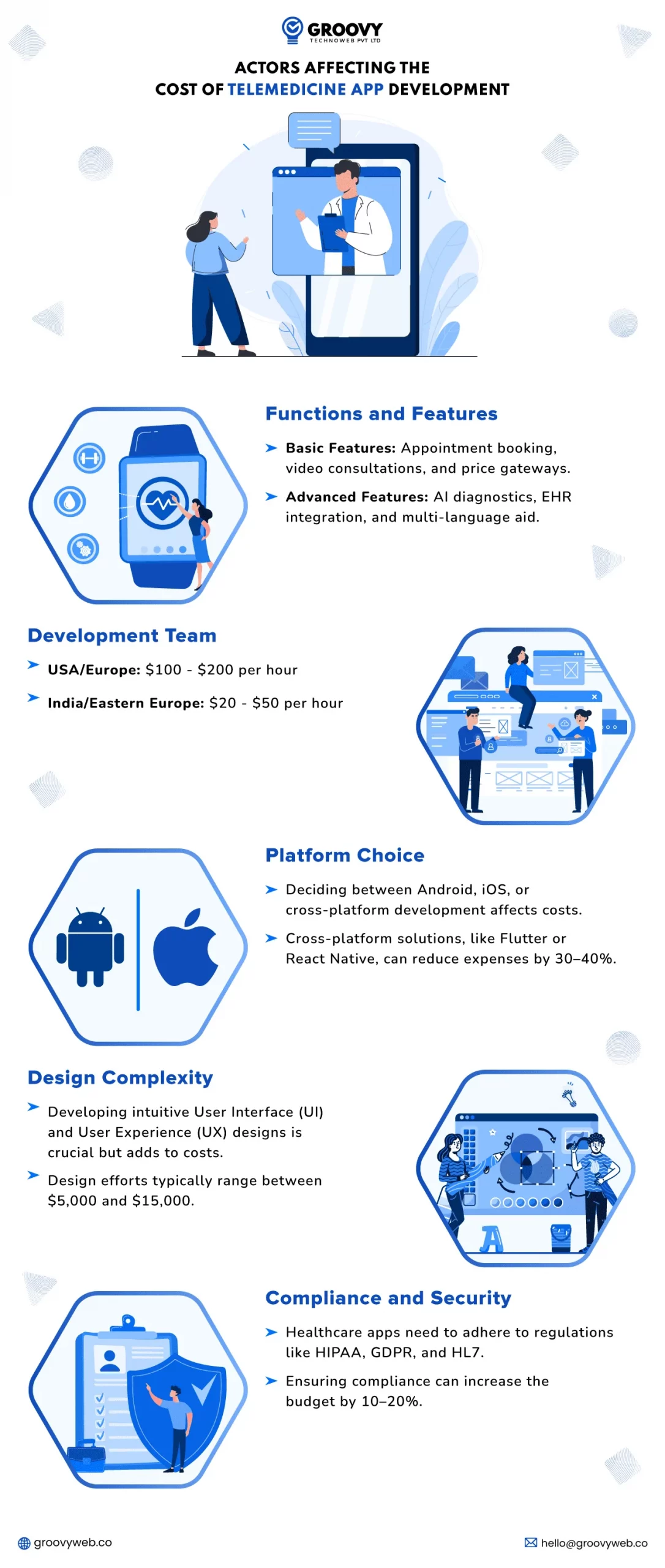
1. Functions and Features
The complexity of the app features without delay impacts the value. Common functionalities encompass:
- Basic Features: Appointment booking, video consultations, and price gateways.
- Advanced Features: AI diagnostics, EHR integration, and multi-language aid.
For instance, a vital app may cost around $25,000 to $50,000, while an advanced app can exceed $2000. Explore detailed insights on telemedicine app features.
2. Development Team
Hiring skilled telemedicine app developers is crucial. Costs can differ based on the team’s area:
- USA/Europe: $100 – $200 per hour
- India/Eastern Europe: $20 – $50 per hour
3. Platform Choice
- Selecting between different platforms like Android, iOS, or cross-platform development impacts expenditures. Cross-platform solutions, using frameworks like Flutter or React Native, can reduce costs by 30-40%.
4. Design Complexity
- An intuitive person interface (UI) and person enjoy (UX) design add to the charges but are essential for app fulfillment. Design efforts usually cost $5,000 to $15,000.
5. Compliance and Security
- Healthcare apps must know regulations like HIPAA, GDPR, and HL7. Compliance provides a further 10-20% to the general finances.
Features of Telemedicine Apps
Video and Audio Communication
- Real-time video and audio consultations shape the spine of telemedicine apps, permitting seamless interaction between patients and medical doctors.
Appointment Scheduling
User-pleasant reserving systems permit patients to schedule, reschedule, or cancel appointments without difficulty.
Secure Messaging
- Encrypted chat capabilities ensure personal and secure communication between users and healthcare vendors.
Electronic Health Records (EHR) Integration
- EHR INtegration systems get access to the history of the patient, their test results, and other essential data, which enhances their diagnostic accuracy.
Prescription Management
- Doctors can have difficulty with virtual prescriptions, and patients can order medications online, simplifying the procedure for both parties.
Multi-Language Support
- Global telemedicine apps frequently include multi-language alternatives to cater to diverse consumer bases.
AI-Powered Diagnostics
- Machine studying algorithms assist in symptom evaluation and provide initial diagnostic suggestions.
Push Notifications
- Reminders for appointments, medicinal drugs, or follow-ups assist customers in staying on the right track with their healthcare desires.
Payment Gateways
- Integrated price structures offer secure and handy options for consultation prices and service bills.
Remote Monitoring
- Telemedicine apps can combine with wearable gadgets to tune essential signs and symptoms, including heart rate, blood stress, and glucose degrees, allowing continuous tracking of the affected person.
Doctor and Specialist Search
- Users can search for docs or experts based on their qualifications, experience, and scores, making finding the proper healthcare company that fits their wishes more leisurely.
Virtual Health Assistant
- AI-pushed fitness assistants can offer customers immediate solutions to clinical queries, schedule consultations, and provide customized fitness guidelines.
Medical History Sharing
- Patients can securely share their medical records and reports with one-of-a-kind healthcare carriers, improving coordination in treatment and care.
In-App Lab Test Booking
- Telemedicine apps often allow booking diagnostic assessments directly via the platform, with domestic collection offerings for convenience
Data Encryption and Privacy Compliance
- Robust encryption standards and compliance with healthcare privacy regulations like HIPAA ensure that user facts stay secure and confidential.
Health Record Backup
- Automatic cloud backups of scientific facts ensure that an affected person’s fitness data is competently saved and reachable from anywhere.
Integration with Insurance Providers
- Some telemedicine apps combine with health insurance companies, allowing sufferers to check coverage and declare reimbursements for consultations easily.
Health Reminders and Alerts
- Telemedicine apps frequently include capabilities for reminders about vaccinations, screenings, and preventative healthcare measures, helping proactive health management.
Offline Mode
- Some apps include an offline mode that lets customers access certain features or records without a lively internet connection.
Family and Caregiver Support
- Certain telemedicine platforms permit customers to add family individuals or caregivers to their profiles, enabling them to display and help with fitness control.
Step By Step Guide on Developing Custome Telemedicine Solution.
Here is a detailed guide:
1. Research and Planning
Before launching app development, you must identify your prey market and their requirements. Conduct surveys, review comments from potential users, and analyze competitors. This research will provide insights into not unusual ache points, assisting you in creating a more user-focused product. A well-described roadmap at this level can save time and money, ensuring the challenge stays centered and aligned with marketplace needs.
2. Choose the Right Development Partner
Collaborating with experienced developers is critical to constructing a splendid telemedicine app. Look for builders with a validated music file in healthcare app development. Check their portfolios for comparable projects and seek testimonials from previous customers. Online systems like Clutch or GoodFirms can help affirm their credibility. A dependent improvement partner will deliver protection, compliance, and capability know-how.
3. Focus on MVP Development
Rather than building a fully featured app, consider starting with a Minimum Viable Product (MVP). An MVP consists of the middle features necessary to meet user desires whilst considering real-world checking out and comments. Developing an MVP can reduce initial improvement fees by 30-50%, making it an excellent manner to gauge market hobby and iterate primarily based on comments earlier than investing in a full-scale app.
4. Integrate Essential Features
Consider integrating critical capabilities that customers anticipate from a telemedicine app for your MVP. Key functions consist of:
- User Registration
- Appointment scheduling
- Secure video conferencing
These capabilities shape the muse of a telemedicine app, providing immediate fees to customers and establishing trust in the app’s capability.
5. Testing and Launch
Rigorous checking out ensures your app is dependable and compliant with healthcare standards. Allocate 15-20% of your price range for checking out, along with functional, safety, and user revel in checking out. Ensure compatibility across a couple of gadgets and operating systems to minimize troubles that can result in consumer drop-offs. This will assist in delivering an easy user-enjoy publish-launch.
6. Marketing and Maintenance
Post-launch advertising marketing and ongoing protection are key to ensuring the lengthy-term achievement of your app. Maintenance fees usually include 15-20% of the annual development price range. Invest in SEO techniques and paid advertising campaigns to raise cognizance and entice users. Regular app updates with new functions, bug fixes, and overall performance enhancements are vital to keeping the app applicable and consumer-pleasant.
Additional Cost Considerations for Telemedicine APP Development
Third-Party Integrations
- Integrating APIs for payments, EHR systems, or video conferencing adds to the budget. Payment gateway integration alone can cost $2,000 to $5,000.
Cloud Hosting
- Hosting telemedicine apps on structures like AWS or Azure incurs monthly costs ranging from $500 to $2,000, relying on traffic and records garage needs.
AI and Machine Learning
- Advanced AI capabilities, which include symptom checkers or predictive analytics, can increase development expenses by 20-30%.
Localization
- Multi-language assistance for worldwide reach can add $ 5,000 to $15,000 to your price range.
Training and Documentation
- Ensure your stakeholders, including healthcare companies and administrative employees, use the telemedicine app correctly. Comprehensive education applications and documentation can add $5,000 to $10,000 to the rate range.
Scalability
- The future of Telemedicine apps is to address increasing traffic and new functions. Scalability improvements can upload 15-25% to the initial development price but are crucial for long-term achievement.
Regulatory Compliance
- Telemedicine apps should review healthcare pointers on HIPAA (Health Insurance Portability and Accountability Act) within the U.S. or GDPR (General Data Protection Regulation) in Europe. Guaranteeing adherence usually calls for prison consultations, audits, and security enhancements, which may charge anywhere from $5,000 to $15,000, depending on the intricacy of the rules within the aim marketplace.
Security Features
- Implementing sturdy protection protocols, which include deliver-up-to-prevent encryption, two-element authentication, and stable cloud storage, is vital for shielding touchy fitness statistics. Based on the amount of safety needed, these protective skills can add up to anywhere from $5,000 to $15,000 to the app’s development pace.
User Interface and UX Experience Design
- Creating an unbroken, patron-nice enjoyment is crucial for patient and employer pride. Investing in expert UI/UX layout services, which embody usability sorting out and design iterations, can add $10,000 to $30,000 to your price range. A properly designed interface helps increase consumer adoption and engagement.
Marketing and Launch Costs
- After improvement, promoting the telemedicine app is essential for undertaking capacity customers. Marketing campaigns, app preserve optimization, and launching techniques can cost between $10,000 and $50,000. This funding allows for the construction of consciousness and lures users to a competitive market.
Updates and Ongoing Maintenance
- Regular updates and protection are critical to ensuring the app stays useful, robust, and updated with present-day skills. Maintenance of the app can vary the price from $2,000 to $10,000 consistently per month based on the app’s complexity and the frequency of updates required.
Customer Support
- Offering customer service through in-app chat, email, or cellphone calls ensures that users have help even as needed. Setting up a committed customer support group or outsourcing this carrier can price a further $2,000 to $8,000 per month, depending on the extent of customers and the assistance channels order.
Cost to Develop a Telemedicine App?
- The telemedicine app introduction charges vary broadly based on capabilities, platforms, and team understanding. Here is an approximate breakdown:
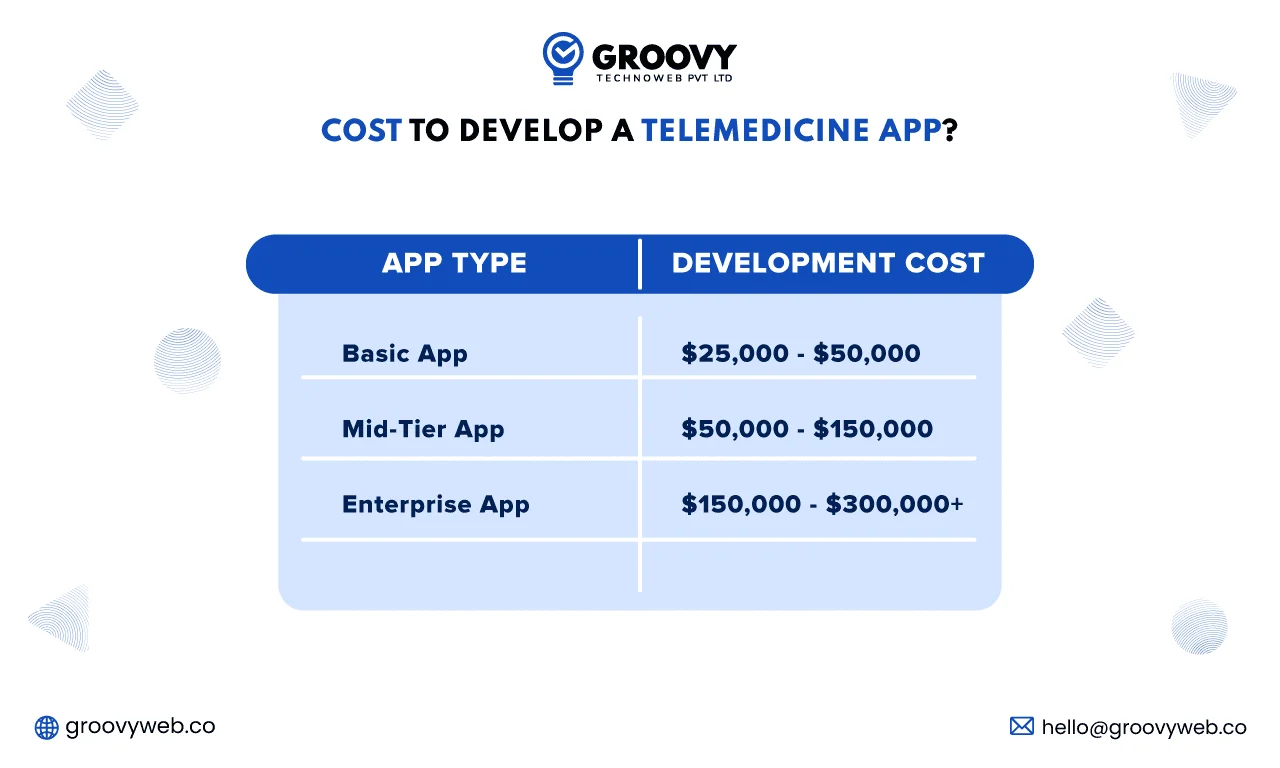
Advantages of Investing in Telemedicine Apps
-
Improved Access to Healthcare
Telemedicine apps damage geographical limitations, ensuring that sufferers in far-flung or underserved regions can get the right of entry to great hospital therapy. By providing digital consultations, those structures join sufferers with healthcare professionals who may additionally, in any other case, be unavailable locally, for this reason, improving health fairness.
-
Cost Effective for Patients and Providers
Telemedicine reduces the need for physical places of business visits, reduces affected individual’s transportation expenses, and lowers healthcare companies’ overheads. Clinical practices can store facility protection and staffing prices with fewer character appointments, developing a more fee-inexperienced machine for all activities.
-
Enhanced Patient Engagement
Telemedicine apps regularly encompass health monitoring, medication reminders, and customized care plans, which help patients live actively and be concerned with their fitness control. This non-stop engagement increases affected person compliance with remedy regimens and encourages healthier lifestyle picks, enhancing long-term fitness consequences.
-
Integrate Essential Features
Consider integrating critical capabilities that customers anticipate from a telemedicine app for your MVP development services. Key functions consist of:
- User Registration
- Appointment scheduling
- Secure video conferencing
These capabilities shape the muse of a telemedicine app, providing immediate customers and establishing trust in the app’s capability.
-
Testing and Launch
Rigorous checking out ensures your app is dependable and compliant with healthcare standards. Allocate 15-20% of your price range for checking out, along with functional, safety, and user revel in checking out. Ensure compatibility across a couple of gadgets and operating systems to minimize troubles that can result in consumer drop-offs. This will assist in delivering an easy user-enjoy publish-launch.
-
Marketing and Maintenance
Post-launch advertising marketing and ongoing protection are key to ensuring the lengthy-term achievement of your app. Maintenance expenses usually contribute 15%-20% of the annual development price. Invest in SEO techniques and paid advertising campaigns to raise cognizance and entice users. Regular app updates with new functions, bug fixes, and overall performance enhancements are vital to keeping the app applicable and consumer-pleasant.
Conclusion
Investing in a telemedicine app can remodel healthcare transport and generate high-quality ROI. Understanding the value of telemedicine app improvement is the first step closer to building a robust, compliant, and characteristic-wealthy platform—associate with professional telemedicine app solution to carry your vision to life.
Written by: Rahul Motwani
Rahul Motwani is an experienced Project Manager with a demonstrated history of working in the information technology and services industry. He started his career as a Backend developer and currently has his hands-on managing projects at Groovy Web. He is a strong program and project management professional with a Bachelor's degree focused on Computer Application.
Frequently Asked Questions
We hope these clear your doubts, but if you still have any questions, then feel free to write us on hello@groovyweb.coHow do third-party integrations affect the price of a telemedicine app?
Integrating 1/3-birthday party APIs for functionalities like charge gateways, video conferencing, and Electronic Health Records (EHR) systems can upload to the development charges. The price for integrations commonly ranges from $2,000 to $15,000, depending on the complexity and safety requirements. Payment gateway integration on my own can cost $2,000 to $5,000. These integrations are vital for the app's functionality; however, they must be planned within the usual finances as they affect each development and ongoing operational expenses.
What factors affect the price of cloud website hosting for a telemedicine app?
Cloud hosting charges for telemedicine apps range depending on information storage requirements, site visitors' quantity, and the extent of safety wished. Hosting on platforms like AWS or Azure usually fees between $500 to $2,000 according to month. Larger apps with excessive site visitors or huge data garage needs can also require a far better cloud infrastructure that can boost expenses. It’s crucial to factor in scalability and statistics safety to ensure clean operations without compromising the affected person's privacy or the app's overall performance.
How do AI and system mastering functions affect the cost?
Incorporating AI capabilities, including symptom checkers or predictive analytics, can increase improvement costs by 20-30%. These superior technologies require specialized algorithms and devices to study fashions, which require extra studies, improvement, and trying out. Although AI integration complements the app's abilities by supplying smarter health insights, it also provides a preliminary investment. However, the return on investment from AI-powered features may be well-sized, offering more customized patient care and decreasing lengthy-term operational prices.
How a good deal does localize a telemedicine app for more than one language price?
Localisation to aid multiple languages in a telemedicine app can value between $5,000 and $15,000, depending on the number of languages and the app's complexity. This includes textual content translation, voice activities, and ensuring the app’s interface is adaptable to diverse cultural and nearby needs. Localization facilitates the expansion of the app’s consumer base and makes healthcare handy for diverse populations. Planning for this cost is critical, especially in order to attain a global market.
Related Blog
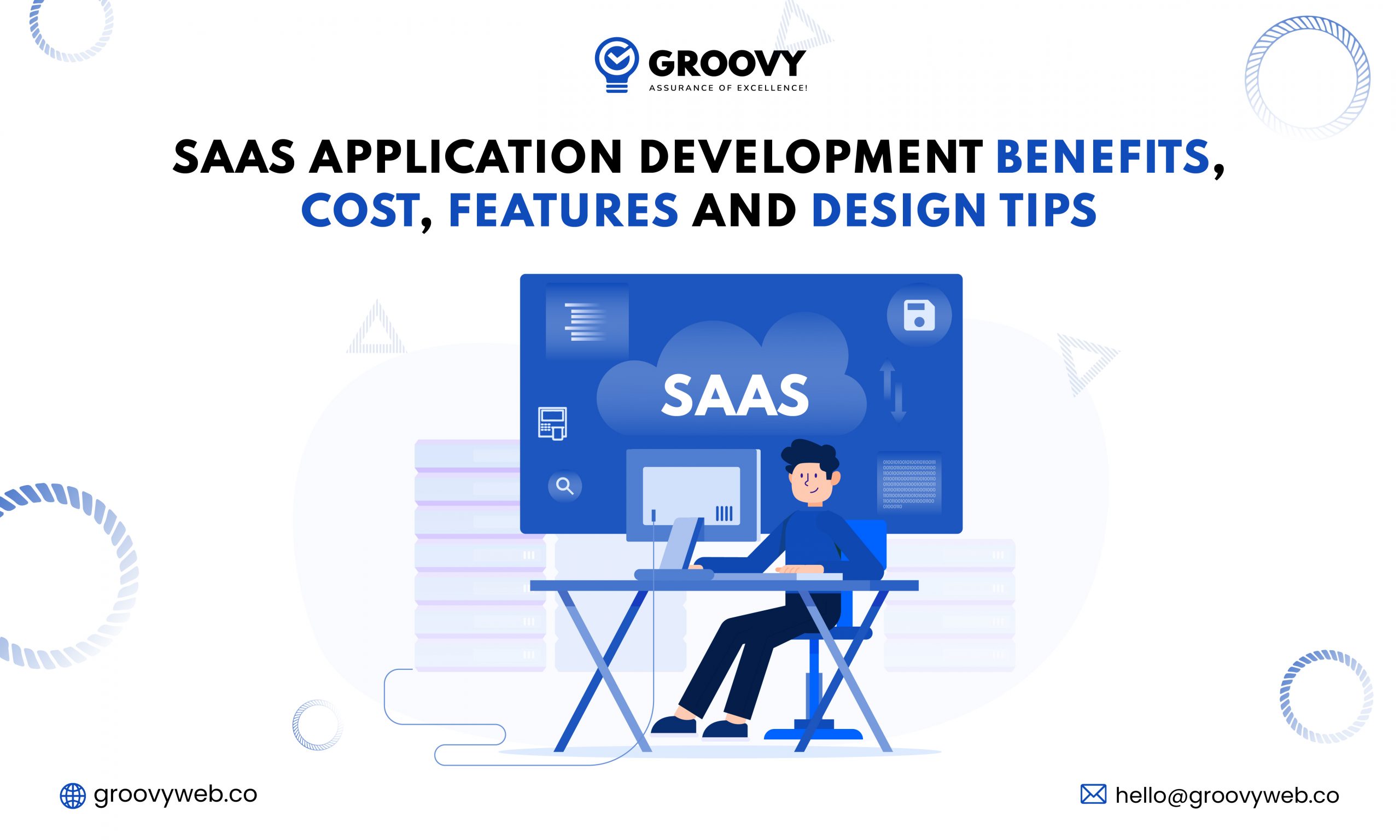
Rahul Motwani
SaaS Application Development Benefits, Cost, Features & Design Tips
Software Development 14 Nov 2024 15 min read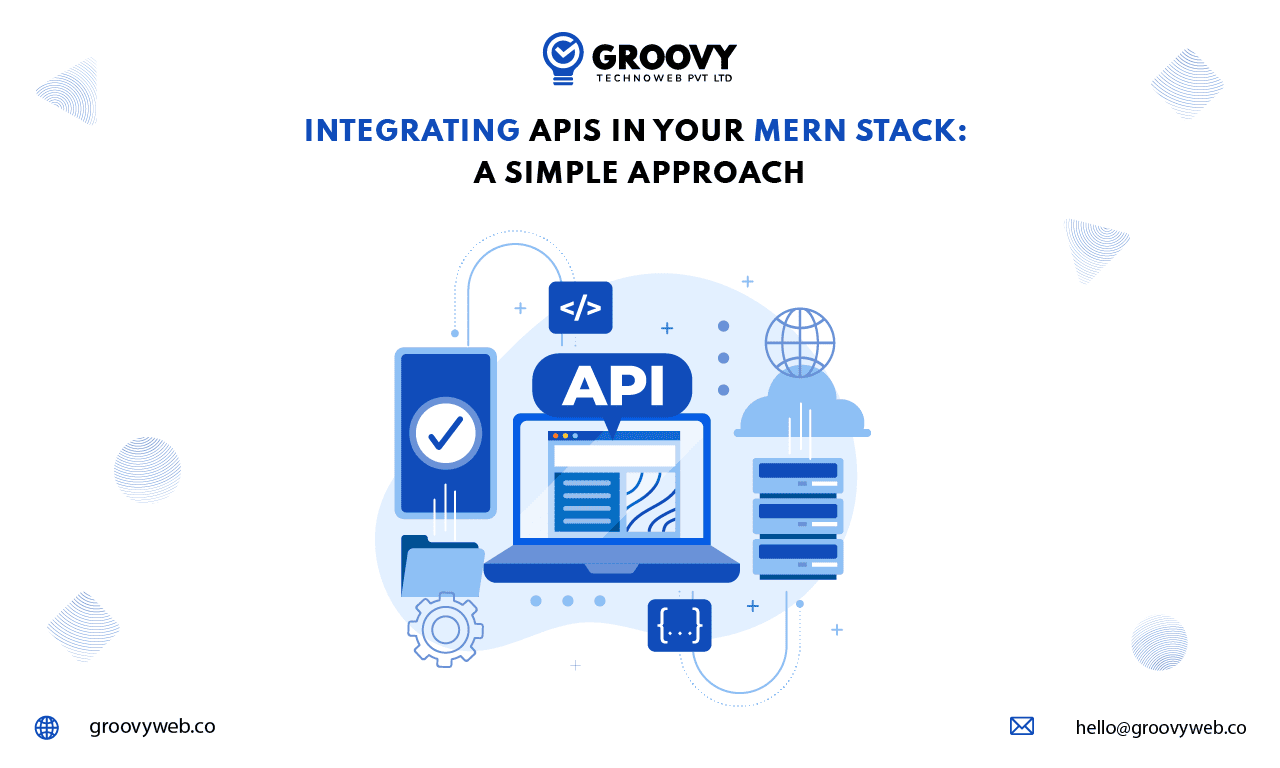
Nauman Pathan
Integrating APIs in Your MERN Stack: A Simple Approach
Web App Development 11 Feb 2025 12 min readSign up for the free Newsletter
For exclusive strategies not found on the blog
